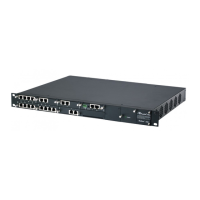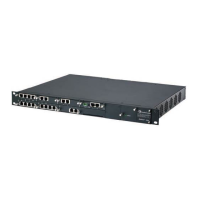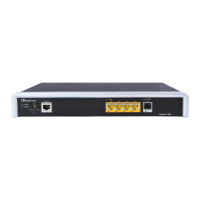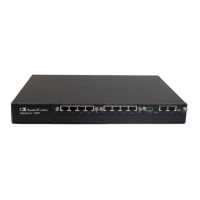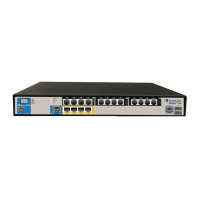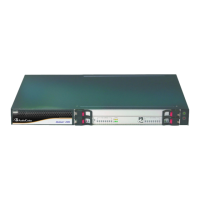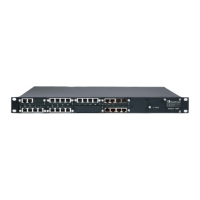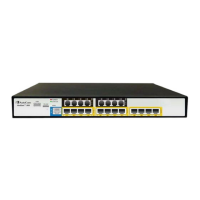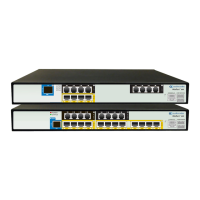User's Manual 638 Document #: LTRT-89730
Mediant 3000
identical to the existing Dial Plan names on the device; otherwise, the specific
Dial Plan is not imported.
For creating Dial Plans in a CSV file for import, see 'Creating Dial Plan Files for Import' on
page 638.
35.2 Creating Dial Plan Files
You can configure Dial Plans in an external file (*.csv) and then import them into the
device, as described in 'Importing and Exporting Dial Plans' on page 637. You can create
the file using any text-based editor such as Notepad or Microsoft Excel. The file must be
saved with the *.csv file name extension.
To configure Dial Plans in a file, use the following syntax:
<Dial Plan>,<Rule>,<Prefix>,<Tag>
Where:
Dial Plan is the name of the Dial Plan.
Rule is the name of the dial plan rule.
Prefix is the source or destination number prefix
Tag is the result of the user categorization and can be used as matching
characteristics for routing and outbound manipulation
For example:
DialPlanName,Name,Prefix,Tag
PLAN1,rule_100,5511361xx,A
PLAN1,rule_101,551136184[4000-9999]#,B
MyDialPlan,My_rule_200,5511361840000#,itsp_1
MyDialPlan,My_rule_201,66666#,itsp_2
35.3 Using Dial Plan Tags for IP-to-IP Routing
For deployments requiring hundreds of routing rules (which may exceed the maximum
number of rules that can be configured in the IP-to-IP Routing table), you can employ tags
to represent the many different calling (source URI user names) and called (destination
URI user names) prefix numbers in your routing rules. Tags are typically implemented
when you have users of many different called and/or calling numbers that need to be
routed to the same destination (e.g., IP Group or IP address). In such a scenario, instead
of configuring many routing rules to match all the required prefix numbers, you need only to
configure a single routing rule using the tag to represent all the possible prefix numbers.
An example scenario where employing tags could be useful is in deployments where the
device needs to service calls in a geographical area that consists of hundreds of local area
codes, where each area code is serviced by one of two SIP Trunks in the network. In such
a deployment, instead of configuring hundreds of routing rules to represent each local area
code, you can simply configure two routing rules where each is assigned a unique tag
representing a group of local area codes and the destination IP Group associated with the
SIP Trunk servicing them.
Note:
• Source and destination tags can be used in the same routing rule.
• The same tag can be used for source and destination tags in the same routing
rule.
The following procedure describes how to configure IP-to-IP routing based on tags.

